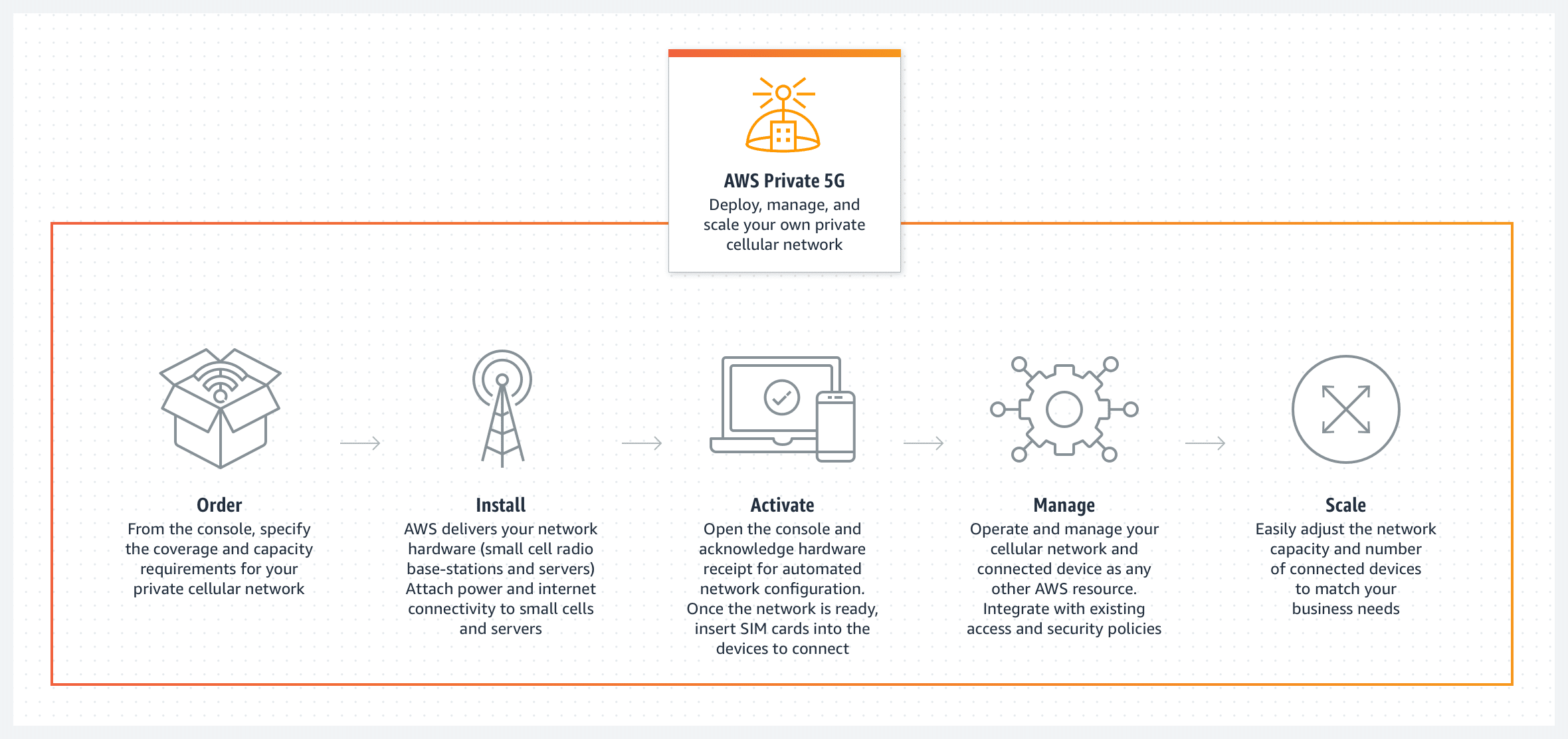AWS CEO Adam Selipsky’s made six major service announcements during his keynote this week. One was AWS Private 5G, a new managed service that helps enterprises set up and scale private 5G mobile networks in their facilities in days instead of months. With just a few clicks in the AWS console, customers specify where they want to build a mobile network and the network capacity needed for their devices. AWS will deliver and maintain the small cell radio units, servers, 5G core and radio access network (RAN) software, and subscriber identity modules (SIM cards) required to set up a private 5G network and connect devices. AWS Private 5G automates the setup and deployment of the network and scales capacity on-demand to support additional devices and increased network traffic. There are no upfront fees or per-device costs with AWS Private 5G, and customers only pay for the network capacity and throughput they request.
AWS CEO Adam Selipsky’s made six major service announcements during his keynote this week. One was AWS Private 5G, a new managed service that helps enterprises set up and scale private 5G mobile networks in their facilities in days instead of months. With just a few clicks in the AWS console, customers specify where they want to build a mobile network and the network capacity needed for their devices. AWS will deliver and maintain the small cell radio units, servers, 5G core and radio access network (RAN) software, and subscriber identity modules (SIM cards) required to set up a private 5G network and connect devices. AWS Private 5G automates the setup and deployment of the network and scales capacity on-demand to support additional devices and increased network traffic. There are no upfront fees or per-device costs with AWS Private 5G, and customers only pay for the network capacity and throughput they request.
A growing number of enterprises need to collect, analyze, and transfer massive amounts of data within their operations from the ever-increasing number of connected sensors and edge devices prevalent in today’s environments. Customers want to leverage cellular technologies like 5G for their on-premises connectivity needs because it offers long-range, extended outdoor coverage, device mobility, and reliable network behavior. Cellular technologies like 5G allow customers to connect more devices and more cost-effectively collect and transfer data with greater flexibility and reliability than current wired and wireless networking technologies.
There are many drawbacks to building out a private 5G network. Network deployments require financial investment, resource commitment, and time, not to mention expertise in configuration, management. With AWS Private 5G, enterprises can now procure, deploy, and scale their own 5G mobile network in days instead of months. With AWS Private 5G, customers log into the AWS console and, with just a few clicks, specify a coverage area within a geographic location where they want to deploy a private 5G network, along with the amount of traffic they expect the network to handle. AWS delivers and maintains the pre-integrated small cell radio units, servers, 5G core, and RAN software. Subscriber Identity Module (SIM) cards needed to connect devices to the network are also provided.


